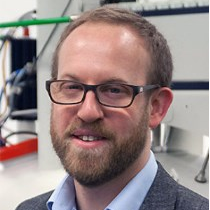Biotechnological Approaches and Biomaterials for Enhanced Wound Healing
A special issue of Journal of Functional Biomaterials (ISSN 2079-4983). This special issue belongs to the section "Biomaterials for Tissue Engineering and Regenerative Medicine".
Deadline for manuscript submissions: closed (31 July 2021) | Viewed by 22427
Special Issue Editors
Interests: polymer synthesis; supramolecular materials; biomaterials; stimuli-responsive materials; drug delivery; tissue engineering; sustainability
Special Issues, Collections and Topics in MDPI journals
Special Issue Information
Dear Colleagues,
There are various wound types encountered on humans and animals on a daily basis (e.g., abrasions, acute wounds, burn wounds, contusions, lacerations, surgical wounds/incision, and traumatic wounds). The healing process can be delayed by a number of factors, both local (related to the wound itself) and systemic (related to the patient and their clinical condition), which has potential for significant cost for the healthcare system and society. Despite the clinical need for improved wound healing outcomes, there is little innovation in wound healing technologies on the market.
This Special Issue is devoted to state-of-the-art biotechnological approaches and biomaterials for wound healing. Such biotechnological approaches include materials and methods that enhance wound healing (including therapeutic, diagnostic, and clinical procedures) in organs and tissues.
We warmly welcome the submission of manuscripts on the topic of the “Biotechnological Approaches and Biomaterials For Enhanced Wound Healing” Special Issue.
Dr. John G. Hardy
Prof. Dr. Bing Hu
Guest Editors
Manuscript Submission Information
Manuscripts should be submitted online at www.mdpi.com by registering and logging in to this website. Once you are registered, click here to go to the submission form. Manuscripts can be submitted until the deadline. All submissions that pass pre-check are peer-reviewed. Accepted papers will be published continuously in the journal (as soon as accepted) and will be listed together on the special issue website. Research articles, review articles as well as short communications are invited. For planned papers, a title and short abstract (about 100 words) can be sent to the Editorial Office for announcement on this website.
Submitted manuscripts should not have been published previously, nor be under consideration for publication elsewhere (except conference proceedings papers). All manuscripts are thoroughly refereed through a single-blind peer-review process. A guide for authors and other relevant information for submission of manuscripts is available on the Instructions for Authors page. Journal of Functional Biomaterials is an international peer-reviewed open access monthly journal published by MDPI.
Please visit the Instructions for Authors page before submitting a manuscript. The Article Processing Charge (APC) for publication in this open access journal is 2700 CHF (Swiss Francs). Submitted papers should be well formatted and use good English. Authors may use MDPI's English editing service prior to publication or during author revisions.
Keywords
- antimicrobial
- bioactivity
- boengineering
- bioethics
- biomaterials
- biophysical approaches
- biosensors
- biotechnology
- chemosensors
- clinical
- drug delivery
- imaging
- regenerative medicine
- scar tissue
- stem cells







